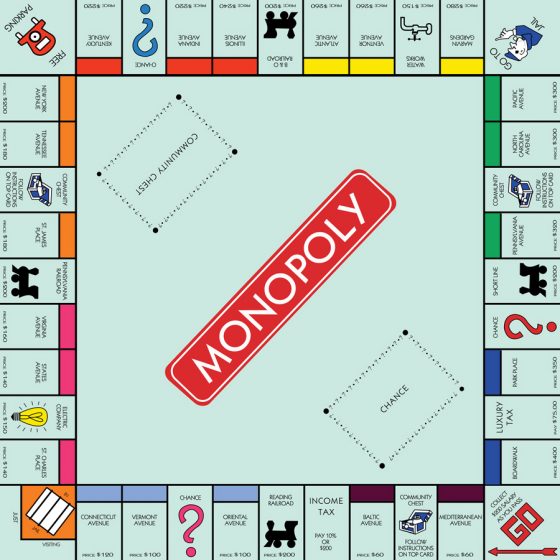FIA Distribution Could Turn into ‘Monopoly’

An exemption allowing only the largest independent marketing organizations to sell fixed indexed annuities under the fiduciary rule threatens to create a “monopoly” of distributors. That was the word from an insurance company executive.
The fiduciary rule is “almost turning the FIA business into a monopoly because there will be fewer and fewer IMOs, if the rule goes through, that have the ability to be a financial institution than currently exists today.” That's according to Ron Grensteiner, president of American Equity Investment Life, in a conference call with analysts.
“We’re going from hundreds of IMOs down to maybe, I don’t know, five to 10 that could be an FI (financial institution)” he said.
Under the fiduciary rule, IMOs with an average of $1.5 billion in premium in each of the previous three fiscal years, would qualify for a financial institution class exemption.
Qualifying under the class exemption would allow IMOs and the independent agents they recruit to sell commission-based FIAs under the Best Interest Contract Exemption for Insurance Intermediaries.
Market analysts estimate only about a dozen or fewer IMOs of that size exist in the market. Although that may not strictly qualify as a “monopoly,” a small group of large IMO distributors may end up operating more like a cartel.
The rest of the 350 to 400 other IMOs estimated to be operating in the $60 billion market for FIAs would not even be eligible for the exemption. IMOs close about 60 percent of all FIA sales.
When a company gains a monopoly, or operates as part of a cartel, one or a small group of distributors benefit from undue influence over pricing to the detriment of consumers.
Choices Facing Small IMOs
Smaller IMOs will have to decide whether to leave the FIA business, merge with larger IMOs eligible for the class exemption, or strike agreements or affiliations with IMOs that own broker/dealers or registered investment advisories, Grensteiner said.
American Equity is one of the biggest FIA sellers in the country. The carrier distributes FIAs through IMOs, some of which own broker/dealers or registered investment advisories.
As a result, many of American Equity’s distributors offer avenues for independent agents to qualify under the BICE.
American Equity’s top five IMOs are responsible for about 52 percent of company sales and the top 10 IMOs are responsible for 78 percent of company sales, said Grensteiner.
An IMO operating as a financial institution under a class exemption would put the marketing company on a par with banks, insurers, broker/dealers and registered investment advisors.
Financial institution status is critical for IMOs because a financial institution is required to guarantee that the terms of the BICE are upheld. BICE is required for fixed indexed and variable annuities purchased with qualified retirement money.
The fiduciary rule raises standards for investment advice and financial products sold into retirement accounts.
Opponents of the rule have sought to delay its implementation but three federal judges have sided with the DOL, with the latest court decision handed down late Wednesday.
Many of the DOL’s requirements for IMOs may “arbitrarily and unnecessarily” prevent highly qualified IMOs from obtaining financial institution. Even with an exemption for IMOs finalized before April 10, eligible IMOs may not have enough time to meet the requirements, said American Equity CEO John Matovina.
DOL officials have proposed extending the compliance period for IMOs that qualify for a class exemption until August 2018.
A 30-day comment period on the IMO exemption ends later this month.
Company Beat Estimates
American Equity on Wednesday reported fourth-quarter net income of $120.8 million.
Net income was $1.35 per share, the company said. Earnings, adjusted for investment gains, came to 63 cents per share.
The results exceeded Wall Street expectations. The average estimate of four analysts surveyed by Zacks Investment Research was for earnings of 57 cents per share.
Fourth-quarter revenue came to $622.8 million. Its adjusted revenue was $475.6 million.
For the year, the company reported profit of $83.2 million, or 97 cents per share. Revenue was reported as $1.85 billion.
InsuranceNewsNet Senior Writer Cyril Tuohy has covered the financial services industry for more than 15 years. Cyril may be reached at [email protected].
© Entire contents copyright 2017 by InsuranceNewsNet.com Inc. All rights reserved. No part of this article may be reprinted without the expressed written consent from InsuranceNewsNet.com.
Cyril Tuohy is a writer based in Pennsylvania. He has covered the financial services industry for more than 15 years. He can be reached at [email protected].




DOL Rule Delay Sent to OMB
NAHU Examines Health Market Stabilization
Advisor News
- Year-end planning errors retirees should avoid
- Social cultivation: How to talk with wealthy prospects
- How important is a written financial plan?
- Coalition wants to advise people impacted by policy changes in new administration
- Diagnosing miscommunication in retirement planning
More Advisor NewsAnnuity News
Health/Employee Benefits News
- CVS Health cuts 42 more jobs linked to Aetna HQ in Hartford
- INSURANCE ENROLLING IN MARKETPLACE COVERAGE FOR 2025
- Health insurance could be costly for Texans during Trump presidency. A policy expert explains why
- Medicare Advantage enrollees face declining coverage
- As Medicare Advantage plans pull out of rural areas, patients stand to lose access to critical care
More Health/Employee Benefits NewsLife Insurance News